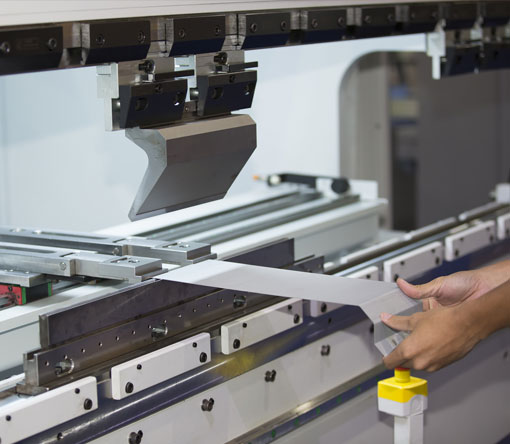Sheet metal fabrication is an essential skill in various industries, from automotive and aerospace to construction and HVAC. As a versatile and cost-effective material, sheet metal plays a crucial role in creating a wide range of products and structures. In this blog post, we'll delve into the world of sheet metal fabrication, exploring its various techniques, tips, and tricks to help you achieve success in your projects.
Understanding the Basics of Sheet Metal Fabrication
Before diving into the nitty-gritty of sheet metal fabrication, it's essential to understand the basics. Sheet metal fabrication is the process of creating parts and structures from flat sheets of metal by cutting, bending, and assembling them into desired shapes and sizes. The most common metals used in sheet metal fabrication include steel, aluminum, brass, copper, and stainless steel.
Techniques Used in Sheet Metal Fabrication
There are several techniques used in sheet metal fabrication, each with its unique advantages and applications. Here are some of the most common methods:
1. Cutting: The process of cutting sheet metal involves removing material to create the desired shape. There are several cutting techniques, including shearing, laser cutting, plasma cutting, and waterjet cutting.
2. Bending: Bending sheet metal involves applying force to change its shape without removing any material. Some common bending techniques include press brake forming, roll forming, and tube bending.
3. Punching: Punching is a process where holes are created in the sheet metal using a punch and die. This technique is commonly used for creating holes for fasteners or ventilation.
4. Stamping: Stamping is a process that involves using a die to create raised or recessed designs on the sheet metal's surface. This technique is often used for creating logos, patterns, or decorative elements.
5. Welding: Welding is the process of joining two pieces of metal together using heat and pressure. There are several welding techniques, including MIG, TIG, and spot welding.
6. Assembling: Assembly is the final stage in the fabrication process, where all the individual components are put together to create the finished product.
Tips for Successful Sheet Metal Fabrication
To achieve success in sheet metal fabrication, it's essential to follow some best practices and tips. Here are some helpful suggestions:
1. Choose the right material: Selecting the appropriate metal for your project is crucial, as it affects the final product's performance, durability, and appearance. Consider factors such as corrosion resistance, weight, and strength when choosing the right material.
2. Use the correct tools and equipment: Having the right tools and equipment for the job is essential for achieving precision and efficiency in your fabrication process. Invest in high-quality cutting, bending, and welding tools, and ensure they are well-maintained and calibrated.
3. Follow proper safety precautions: Sheet metal fabrication can be dangerous if proper safety measures are not taken. Always wear appropriate personal protective equipment (PPE), such as gloves, safety glasses, and ear protection, and follow all safety guidelines and procedures.
4. Plan your project carefully: Before starting your fabrication project, take the time to plan and design it carefully. This includes creating detailed drawings and blueprints, as well as considering factors such as tolerances, material thickness, and assembly methods.
5. Pay attention to finishing: The final appearance of your sheet metal project is just as important as its functionality. Ensure that all edges are smooth and deburred, and consider using surface treatments such as painting, powder coating, or anodizing to protect and enhance your product's appearance.
Innovative Techniques and Trends in Sheet Metal Fabrication
As technology advances, so do the techniques and trends in sheet metal fabrication. Here are some innovative methods and developments that are shaping the industry:
1. 3D printing: Although still in its early stages, 3D printing technology has the potential to revolutionize sheet metal fabrication by allowing for rapid prototyping and the creation of complex, customized components.
2. Robotic automation: The use of robotic automation in sheet metal fabrication can significantly increase efficiency and precision while reducing labor costs. Robotic arms can be used for tasks such as cutting, bending, and welding, allowing for faster production times and higher-quality products.
3. Software advancements: The development of advanced software programs for computer-aided design (CAD) and computer-aided manufacturing (CAM) has made it easier than ever to design and produce complex sheet metal components with high precision.
By staying up-to-date with the latest techniques, trends, and best practices in sheet metal fabrication, you can ensure that your projects are successful, efficient, and of the highest quality. Whether you're a seasoned professional or just starting in the industry, mastering sheet metal fabrication is a valuable skill that will serve you well in a wide range of applications.
best ss sheet metal fabrication













